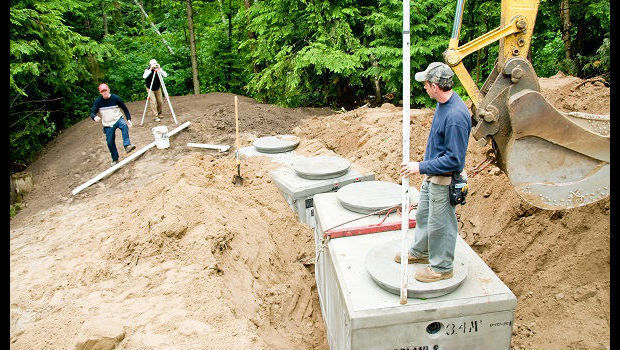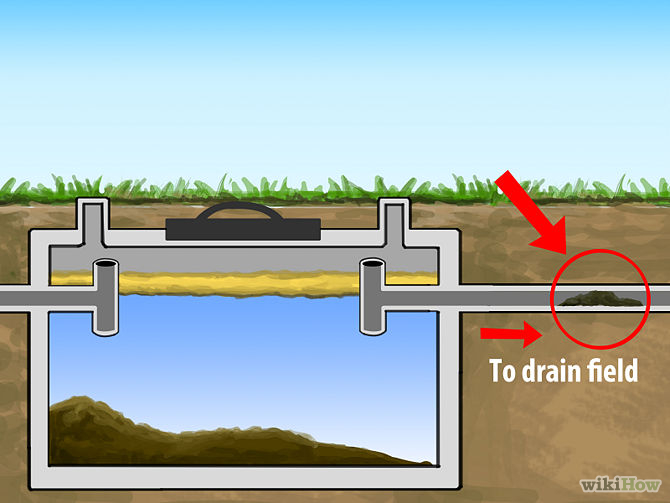You Are Responsible For Maintaining Your Septic System

“Years ago we had a septic system when we lived in a different area and it was a nightmare. The leach field failed and we had nothing but problems.” ~anonymous
Has this happened to you? Though it is very possible this person inherited a problem from the previous owner, if that was the case, he should have had an inspection before buying. If it occurred afterward, well…as a homeowner, it is your responsibility to educate yourself about your septic system, septic tank cleaning, and how to properly maintain it.
This post will give you some important information to get you started. Find more helpful tips HERE.
1. UNDERSTAND YOUR SEPTIC TANK
In a septic tank, solid waste settles to the bottom and scum rises to the top. Excess liquid goes out to the drain field. Bacteria break down the solids in the tank but they need to be pumped out periodically. Read Your Septic System: A Mini-Course for Homeowners for a more complete explanation.
2. DON’T FLOOD THE SYSTEM!
Your septic tank can only handle so much water at a time. The tank needs time to separate the solids and liquids and send the liquids to the drain field, so 10 loads of laundry in one day is probably not a good idea! Make sure you choose the right load size when doing laundry. Washing a small load on the large load setting wastes water.
Check for running toilets and leaky faucets and consider installing low flow or high efficiency toilets.
3. PROTECT THE TANK
Do not put anything heavy on the ground over your tank or drain field like a structure, parked car, cement, asphalt, or above ground pool. This can damage the tank and pipes and compromise the effectiveness of the drain field.


Only flush biodegradable substances! These are some things that should be avoided which can clog the tank and kill beneficial bacteria needed to help break down solids: dental floss, feminine hygiene products, diapers, cigarette butts, cat litter, Kleenex tissue, cotton swabs, coffee grounds, paper towels, condoms, household chemicals, gasoline, grease (oils, bacon fat, etc.), paint, and bleach.
By flushing a quart of spoiled buttermilk down the toilet every few months, you will be adding healthy bacteria to your septic tank, naturally!
Single ply toilet paper is best.
Provide good maintenance around the tank. Cut down all large trees and shrubs near the tank and drain. Be especially careful of trees with aggressive roots such as willow trees.
Make sure you have gutters installed and positioned so rain doesn’t overload the field if it is near the roof line.
4. SEPTIC TANK CLEANING IS A MUST!
Most homeowners will call septic cleaning companies once every two or three years. However, this depends on the size of your tank and the number of people in your household. Your service provider will know what is best for your household. Garbage disposal usage increases the frequency you will need your tank pumped. These may be convenient, but they are not recommended for homes with septic systems.
A good service will also inspect your tank while pumping it out to make sure it’s in good working order.

DID YOU KNOW?
Enough tiny non-biodegradable fibers enter your septic system each year to carpet your living room! A high tech washing machine lint trap filter can help reduce this amount, helping to prevent clogs in the system.
We at Tim Frank Septic Cleaning Company are education specialists! We know our business and have a longstanding reputation to prove it. A new septic system can run into the tens of thousands of dollars. Regular septic tank cleaning and maintenance can prevent that from happening. Is it time for your tank to be inspected or pumped? Call us today!
